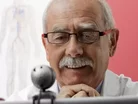3 Things Telemedicine Needs to Succeed in 2015

Numerous research analysts have been predicting that 2015 will see a huge increase in the integration of telemedicine.
Research firm Kalorama Information named telemedicine as one of the top five health trends for the year while IDC Health Insights projected that 65 percent of transactions with health care organizations will be mobile by 2018.
While the industry is poised to grow exponentially in the coming months, there are still some obstacles to overcome.
According to Chirag Patel, managing director of Highnote Foundry, there are three things that need to happen for telemedicine use to expand, as outlined in a recent VentureBeat article.
[READ MORE] Top 5 Digital Health Trend Takeaways from CES 2015
1. Virtual diagnosis and on-the-spot treatment are combined.
“Mobile-friendly diagnostic devices enable doctors to complete a more thorough diagnosis and provide on-the-spot treatment,” Patel wrote. “As these devices become more accessible, patient treatment can begin immediately before the patient even gets off the phone, resulting in better outcomes for the patient and the health care.”
2. The best in connected devices need to be used.
Wearables and technologies that put patients in control are growing, but this data has yet to reach all physicians for use.
“By creating a normalized set of patient and care data and by integrating these connected devices, telehealth providers can both lower the cost of care and improve overall patient outcomes,” Patel said.
He additionally advised providers to invest in scalable models of integrating data from a variety of devices, rather than relying on a single system or product alone.
[READ MORE] TOP 10: Health Tech Dangers to Watch Out For in 2015
3. Post-treatment care and compliance are provided.
“Prevention and compliance should be the real goals of telemedicine and are the way to truly drive significant reduction in costs,” Patel said. “To do this, providers need to understand the patient’s past medical history and also capture all of the new data associated with telemedicine into an electronic record that follows the patient.”
Monitoring patients in the first 30 days after discharge to prevent readmissions is one of the great opportunities for telemedicine and remote monitoring.
Follow us on Twitter (@HealthcareGlbl) and like us on Facebook!



